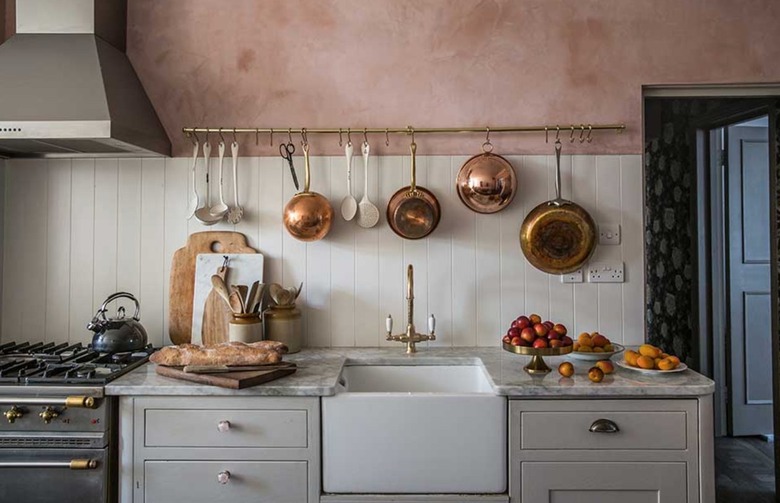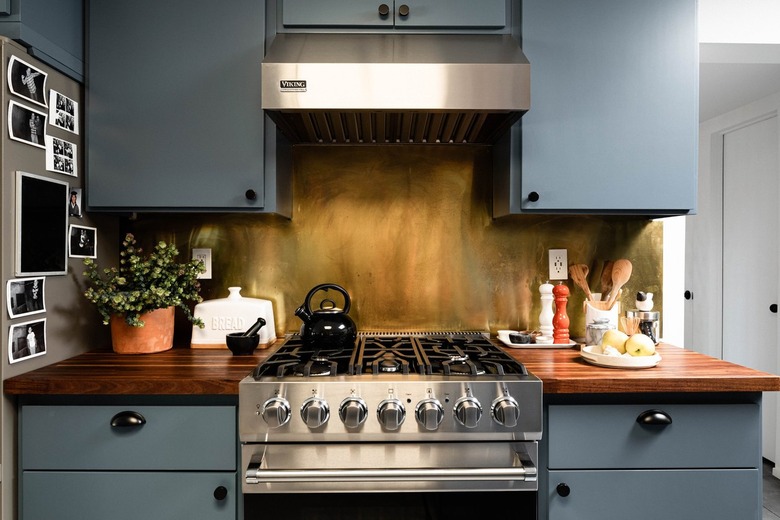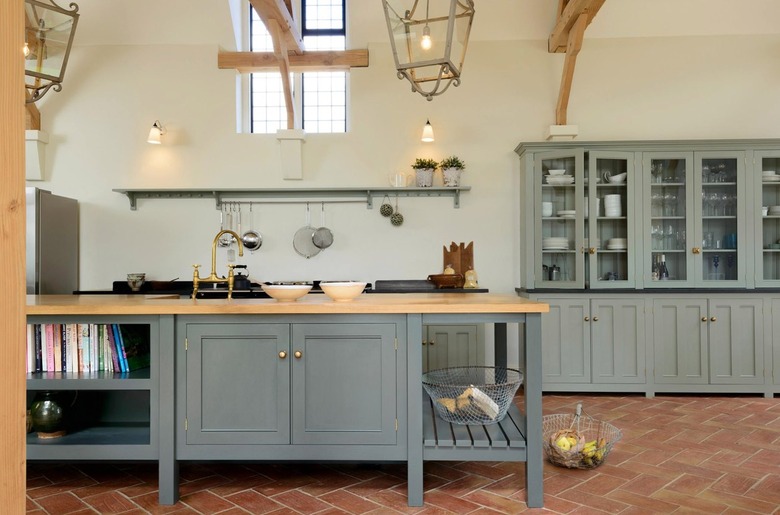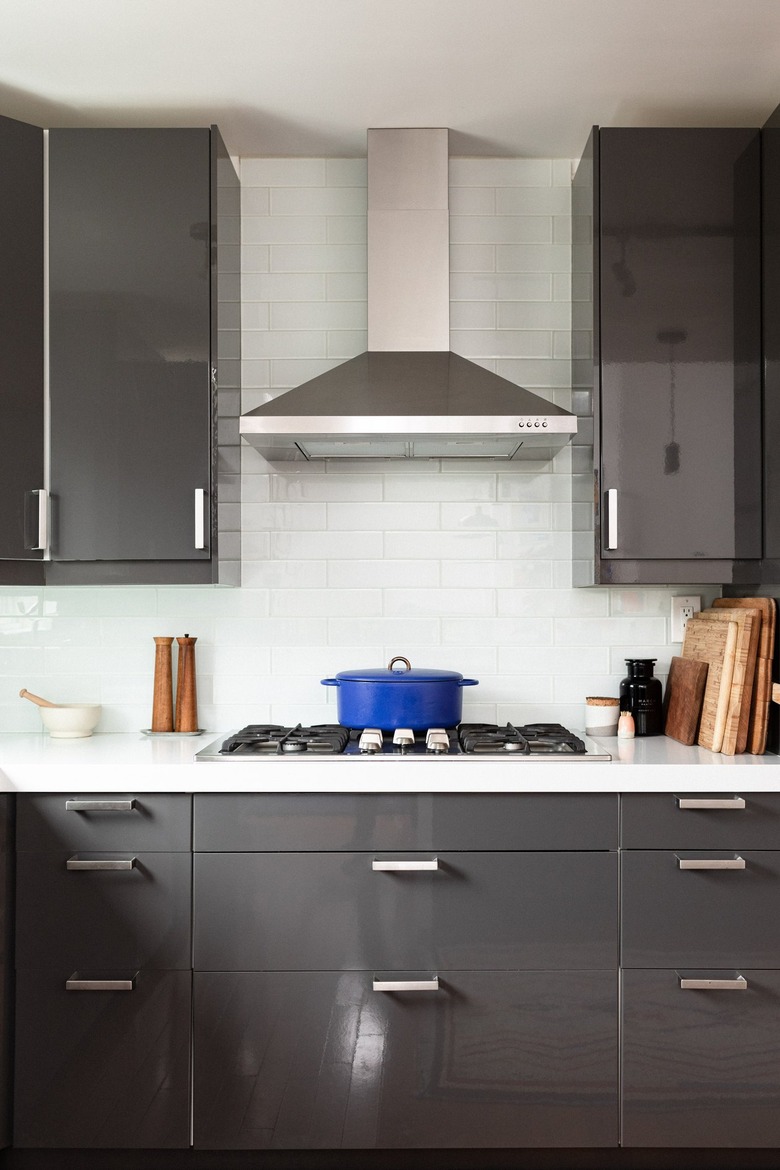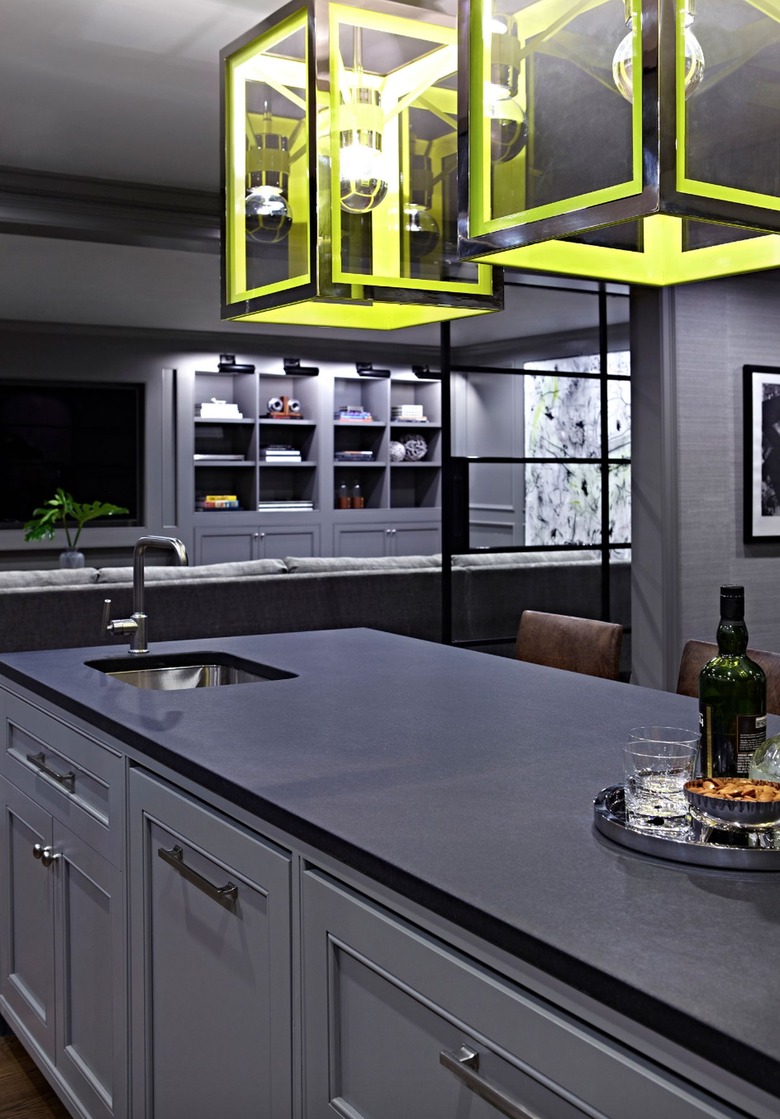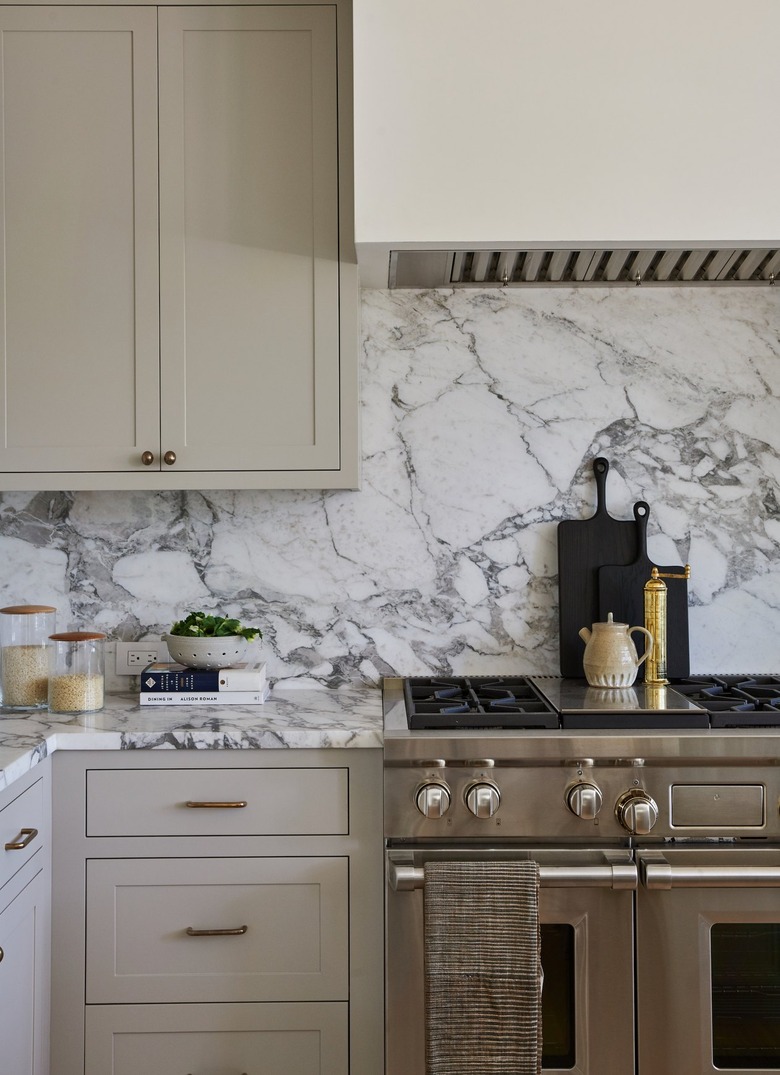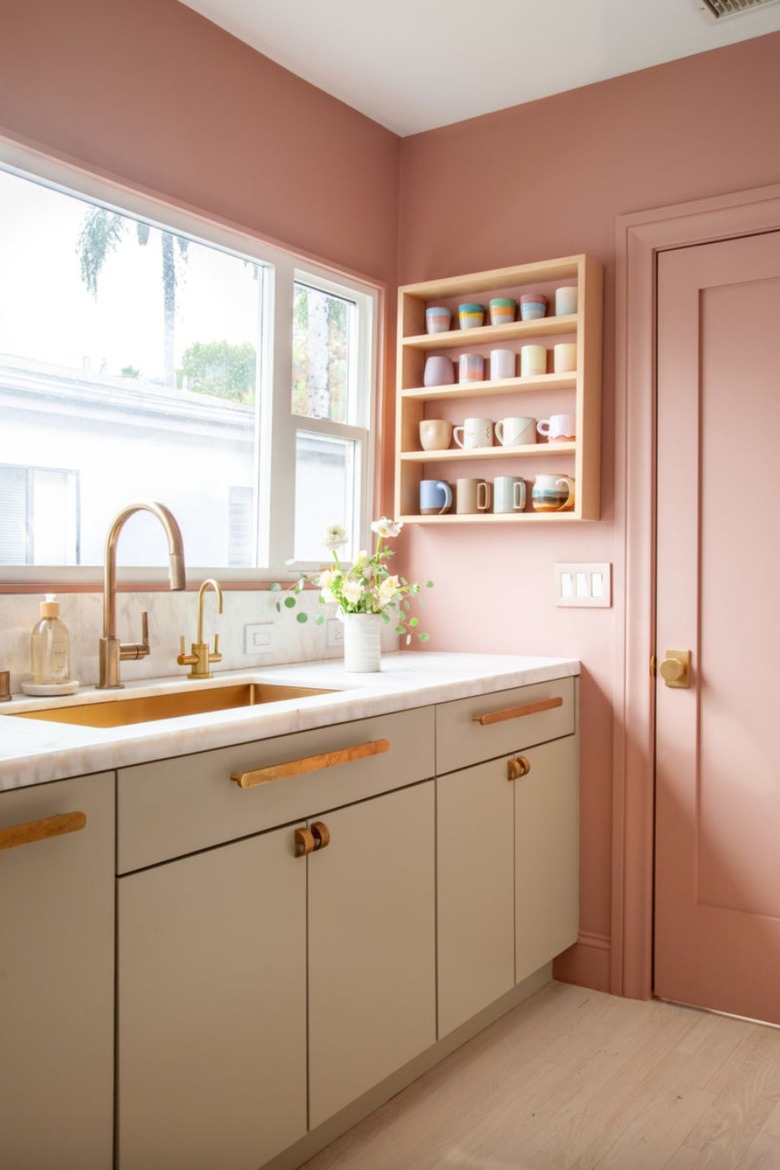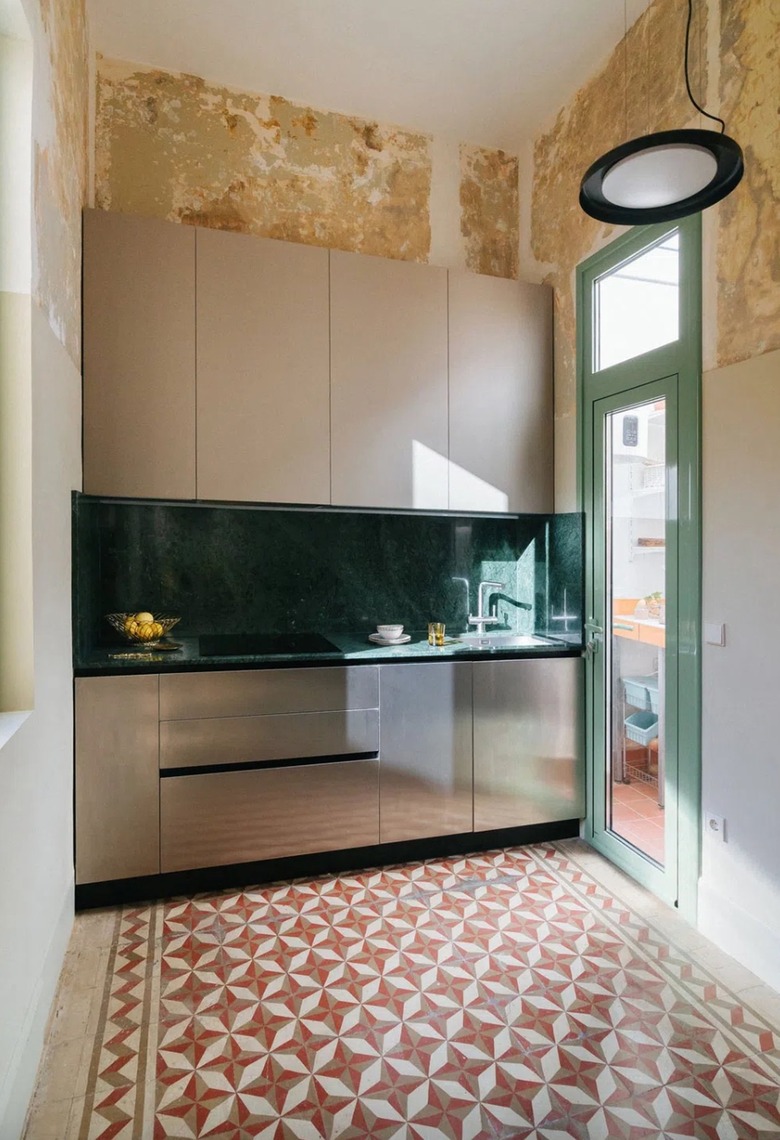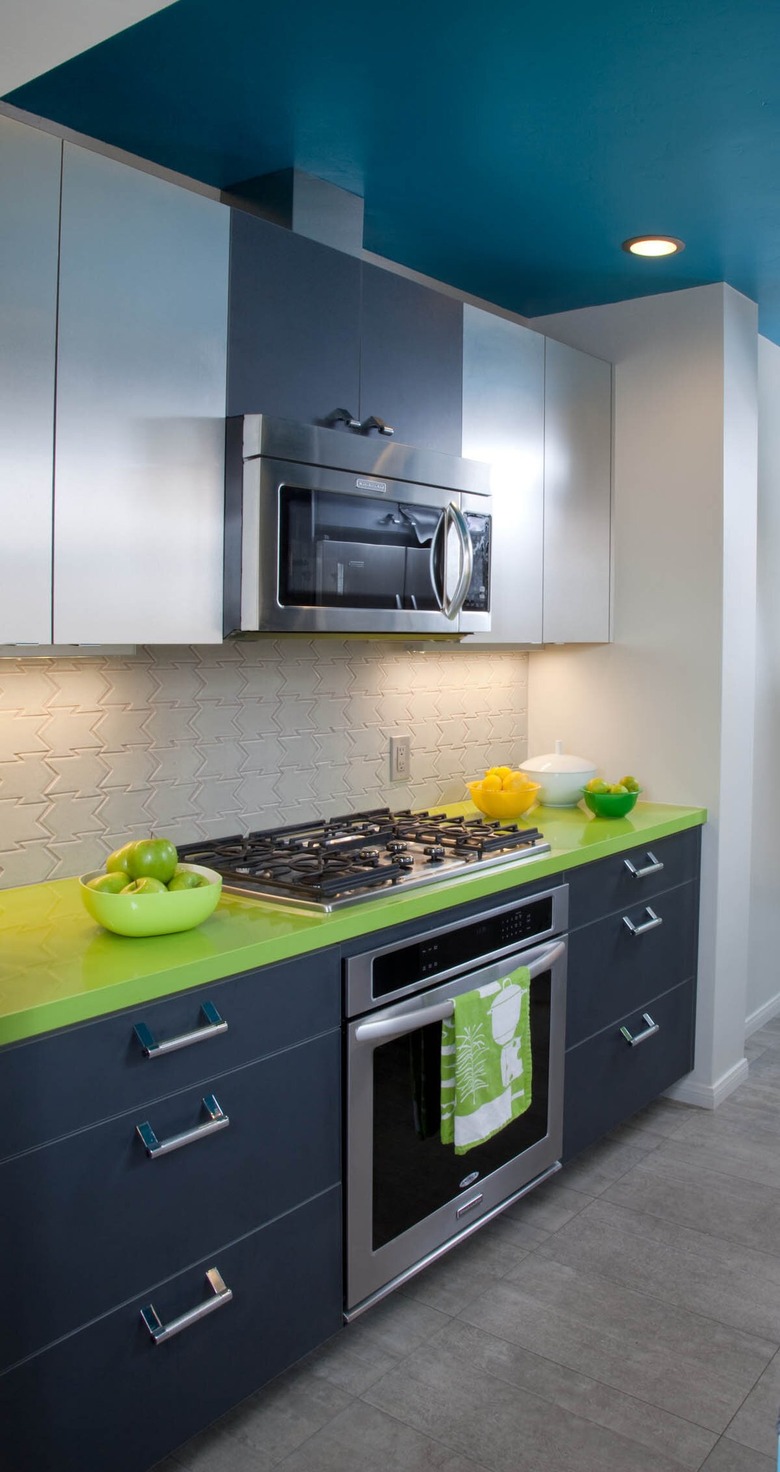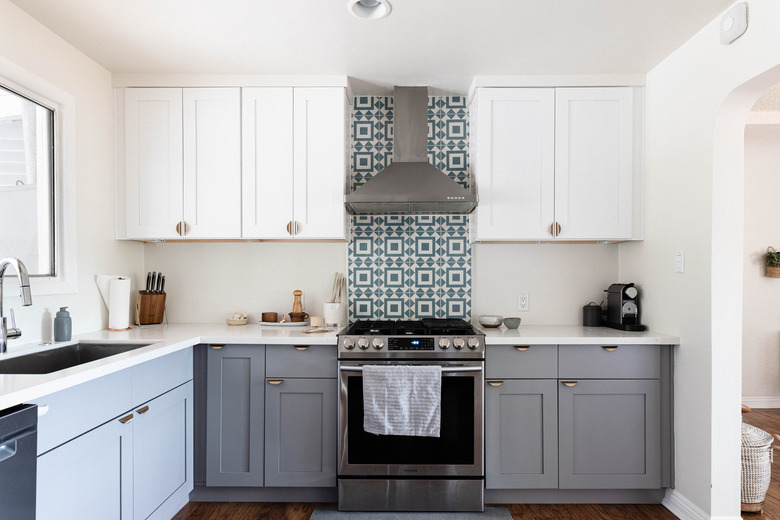9 Gorgeous Countertop Colors That Go With Gray Cabinets
Finding the right paint colors for your kitchen cabinets isn't always a black and white matter. Sometimes, it's all about embracing the gray area — in this case, literally. From light dove to dark, moody charcoal, gray is one of the only neutrals that has such as a vast range of shades. In fact, it's exactly this versatility that makes it a go-to hue for the kitchen. "Gray is a color that can be warm or cool — it can be interpreted differently based on surrounding color and lighting," interior designer Young Huh explains.
Gray might be an easy choice for your kitchen cabinets, but what does require careful consideration is the tones and materials you choose for the rest of your cook space. As far as we're concerned, one of the most crucial decisions you can make is the color of your countertops. There are a lot of factors that go into selecting the right countertop. Is the material durable enough to withstand sauce stains and scratches? Does your shortlist of surfaces fit comfortably within your budget? How does it look with your kitchen's natural sunlight? And, above all, how does its color interact with your exact shade of gray? (After all, a white countertop can look bright and airy with light gray cabinets, while it can create a dramatic contrast with charcoal.)
When it comes to finding the perfect match, beauty really does lie in the eye of the homeowner. But, if you are looking for some inspiration, we're breaking down everything you need to know about making this decision — plus a few fail-safe color combinations.
How to Choose Countertops for Gray Cabinets
How to Choose Countertops for Gray Cabinets
While color does play a huge role in choosing the perfect countertops for your dream kitchen (see the lovely palette in the kitchen above by Jersey Ice Cream Co., for example), it's important to find a solid surface that's durable, easy to maintain, and won't fade over time. To start your search, we're giving you a crash course in the top materials for your kitchen countertops. By sussing out the pros and cons now, you'll be able to focus on the fun things such as finding the color scheme later.
- Laminate: Made with plastic layers that are typically bonded to particle board, laminate is known for being a durable and cost-effective option. (Another thing to love is that laminate is man-made, which means it's available in a wide range of colors.) Since laminate is less porous than its natural stone counterparts, it is surprisingly easy to maintain. The only catch is that laminate isn't heat- or scratch-resistant, so you will need to use a trivet or cutting board throughout the meal prepping process.
- Marble: From Michelangelo's David to the Taj Mahal, so many architectural greats are made with marble — so why should your home be any exception? But, while marble's undeniably stylish veining makes it a popular choice and can even increase your home's value, the material does have some drawbacks. Not only are marble countertops incredibly heavy and expensive, but they're also super vulnerable to stains, nicks, and cracks. Even if you do keep a close eye on this notoriously high-maintenance material, it's bound to show wear and tear over time.
- Granite: Another stone that deserves a spot on your countertop shortlist? Granite, which is a gorgeous igneous rock. Available in a handful of colors — ranging from a light-hued slab to dark greens or blacks, granite countertops are known to be durable, heat-resistant, and difficult to scratch. (That said, they can be a bit porous, so you'll want to seal yours right away.) But, while granite offers a lot to love, its unique crystal pattern can be polarizing. Though interior design trends are poised to come and go, those who want to create a modern look might find themselves stepping away from granite.
- Quartz: Believe it or not, quartz countertops are actually man-made. (You see, quartz is ground into a fine powder and mixed with resin to create a non-porous, virtually stain-resistant material.) Though this option is available in a handful of lovely colors — white quartz! pink quartz! black quartz! — excess heat will leave a mark.
- Quartzite: Anyone who is torn between quartz and marble will find a lot to love about quartzite, which is the stone's all-natural iteration. Typically sold with a white backdrop and gorgeous, bluish veining, quartzite has the appeal of marble but the stain- and scratch-resistance of quartz. (Just remember that quartzite will need to be sealed every so often.)
- Butcher block: We don't know who needs to hear this, but a great grain in your kitchen doesn't begin and end with you wooden flooring. Since butcher block comes in a variety of wood varieties, this affordable option is available in a range of neutral shades. Though butcher block is easy to clean, it is susceptible to sun damage, staining, and dings. (Butcher block can also expand and contract as the temperature changes.)
- Soapstone: A metamorphic rock that features talc and other materials, soapstone is a wonderfully veined countertop material that can appeal to all of the senses. (Don't believe us? You'll be amazed by its slightly soapy feel.) Though soapstone is beloved for its style and stain-resistance, it can be prone to scratches. Plus, it's one of pricier countertop materials, so you'll want to consider how it affects your bottom line.
- Stainless steel: Stainless steel might be a no-brainer for your appliances, but is it a suitable countertop material? Well, that depends. Though stainless steel offers an industrial look — and combats stains and heat — it's definitely prone to scratches, dents, and fingerprint smudges.
So, the big question: Which countertop material is worth adding to your kitchen remodel? Ultimately, it all boils down to your personal preference. Each countertop material has its own unique set of pros and cons, so it's important to consider what will work best for your lifestyle and space. (For example, avid home chefs will get a lot of mileage out of a non-porous material like quartz or stainless steel. Meanwhile, homeowners with larger kitchens can stretch their dollar with a budget-friendly butcher block or laminate.)
But, just because you choose a neutral hue doesn't mean you can't incorporate a fresh pop of color. From a pigmented backsplash to subway tiles and fabulous accessories, you can easily make a splash with any combo.
9 Countertop Colors for Gray Cabinets
1. Gray
We're going to let you in on a little secret: You don't necessarily have to choose a contrasting color to go with your cabinets. For a kitchen idea with plenty of depth, consider adding gray countertops. "Depending on the mood you're trying to achieve, having a monochrome look or similar grays paired together can achieve a modern look," explains Linda Hayslett of LH.Designs. "Something like a light gray quartz top paired with a medium to dark gray cabinet will also give a streamlined look." Perfecting a contemporary kitchen has never been so easy.
2. Medium Wood
You don't have to live in a rustic farmhouse to want to incorporate wooden countertops into your kitchen design. Here, medium-toned wood adds some warmth to the slate, slab-front cabinetry, proving that this look can go with any shade of gray. When paired with a gilded backsplash, the wooden countertops bring organic depth to an otherwise sleek, contemporary kitchen.
3. Light Wood
While cherry and cedar are wonderful wood varieties to pair with your gray cabinetry, don't be afraid to go a little lighter. When paired with a medium gray, lighter grains like oak and birch can brighten up the kitchen without losing the warmth that naturally comes with wood. Let this kitchen idea from deVOL show you how it's done.
4. White
Want to lighten up your gray cabinets? You simply cannot go wrong with white countertops. "A soft white marble or quartz will always be classic paired with any hue of gray chosen for the cabinets," Hayslett shares. "It won't get old and can always be easily accessorized [for] different seasons." While white will look good with various shades of gray, it will especially pop against dark-hued cabinets.
5. Black
Dial up the drama by pairing your gray kitchen cabinets with black countertops. "Using [the dark hue] can really make your cabinets pop," Hayslett shares. "A black, marble-like quartz paired with a [deep] gray cabinet color can make the cabinetry look sultry." To keep your kitchen style from appearing dreary, add a bold accent color. In this kitchen look from Chango & Co., two neon green light fixtures brighten up the space.
6. Black and White
Why decide between black and white countertops when you can have the best of both worlds? In this space by Amber Interiors, the high-contrast veining stands proudly against the warm gray cabinets without upstaging the rest of the space. A matching marbled backsplash and brass accents round out the room, adding an inviting energy to an otherwise neutral space.
7. Blush Pink
High-contrast kitchen styles are a bonafide way to make a statement, but you might be eager to think beyond black and white For a warm, whimsical alternative, consider offsetting a light, taupe-tinged gray with a pastel countertop. Though pink quartz is an obvious choice, the warm veining in this kitchen from New Generation Improvements matches the blush walls, creating a space that's both soothing and dramatic.
8. Emerald Green
Looking for the perfect match for your gray, stainless steel cabinets? Soften your industrial slabs with a dark yet bold color. Not only does emerald green offer a perfectly moody touch — as seen in this space Five Oh Five Design schemed up — but it also nods to the earthy palette that's recently won over designers. Whether you opt for a verdant marble or jewel-toned granite, this combo will have your dinner party guests green with envy.
9. Lime Green
Though gray cabinets are most commonly matched with neutrals like black, gray, and white, there is plenty of opportunity to add a fun burst of color. If your ideal kitchen look skews toward the more maximalist end of the spectrum, make your countertops the center of attention with a bold, can't-miss shade. While yellow and bright blue are suitable options, designer Kristy Kropat packed on the pigment with lime green. Electric blue ceilings complete the playful color scheme.
Countertop Colors That Go With Gray
Countertop Colors That Go With Gray
Whether you're looking for a cozy culinary corner or a sleek, sophisticated space, one thing's for sure: There's bound to be a gray cabinet idea to suit your dream kitchen. So, how do you pick the perfect countertop combination?
Once you've selected the right material for your needs, it's all about personal taste. Though most people stick with neutral countertop colors like black, gray, white, and natural wood, some design enthusiasts might experiment with lively pops of color. The question you need to ask yourself, however, is what vibe you're going for. While a white countertop may make light gray cabinets appear even more light and airy, a black surface will play up the contrast.
To spark inspiration, here are a few options to consider:
- Gray
- Medium wood
- Light wood
- White
- Black
- Blush pink
- Emerald green
- Lime green
